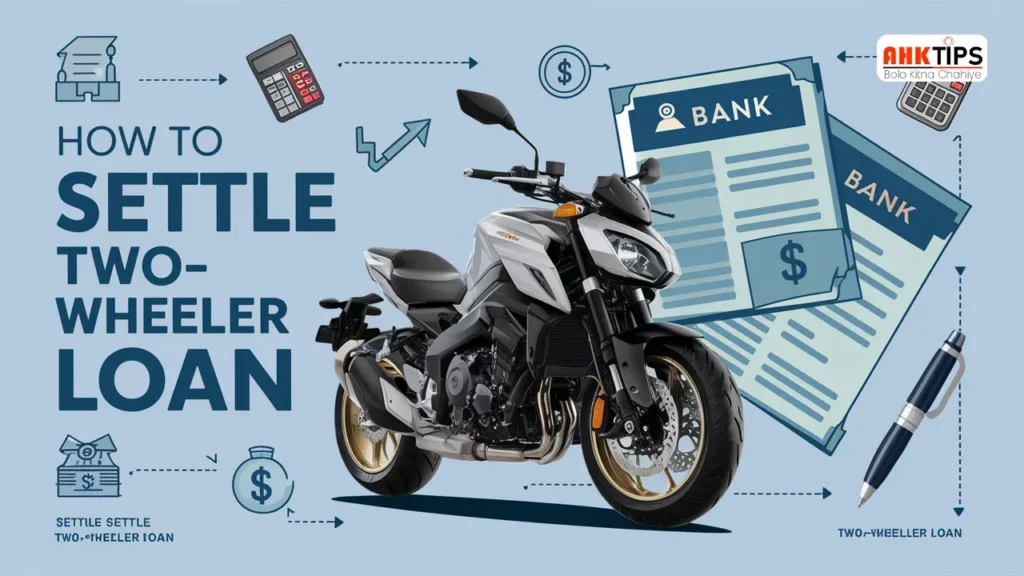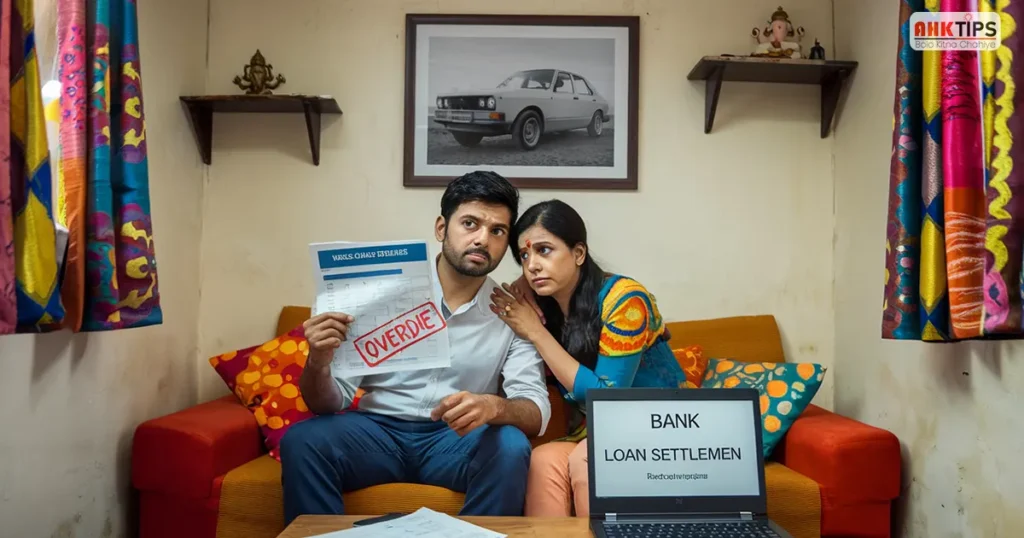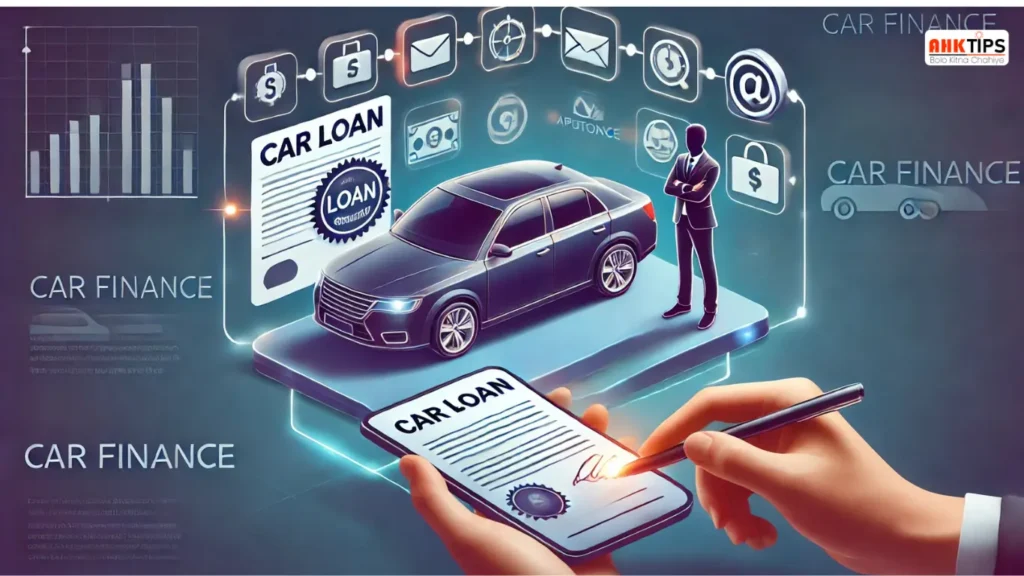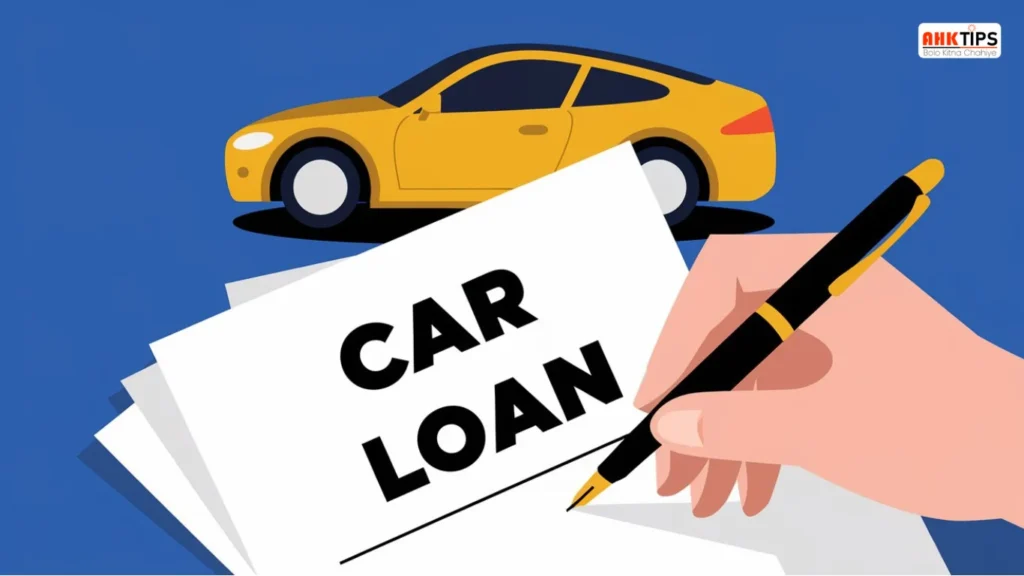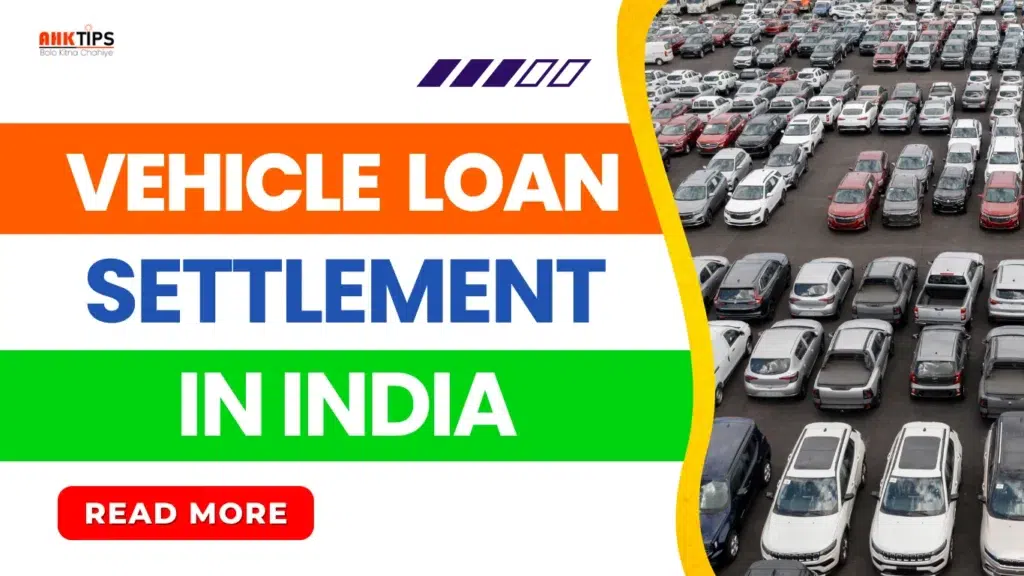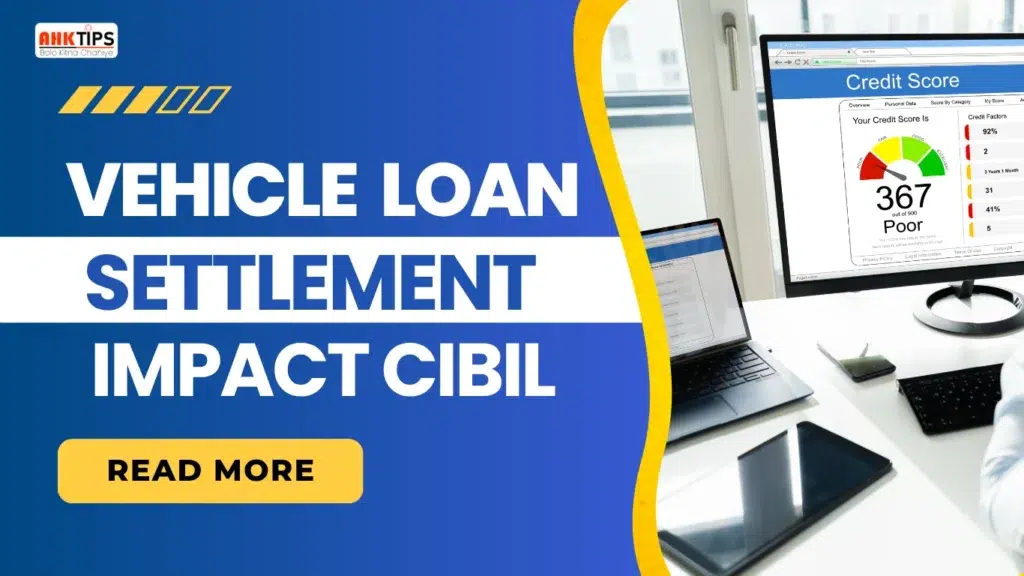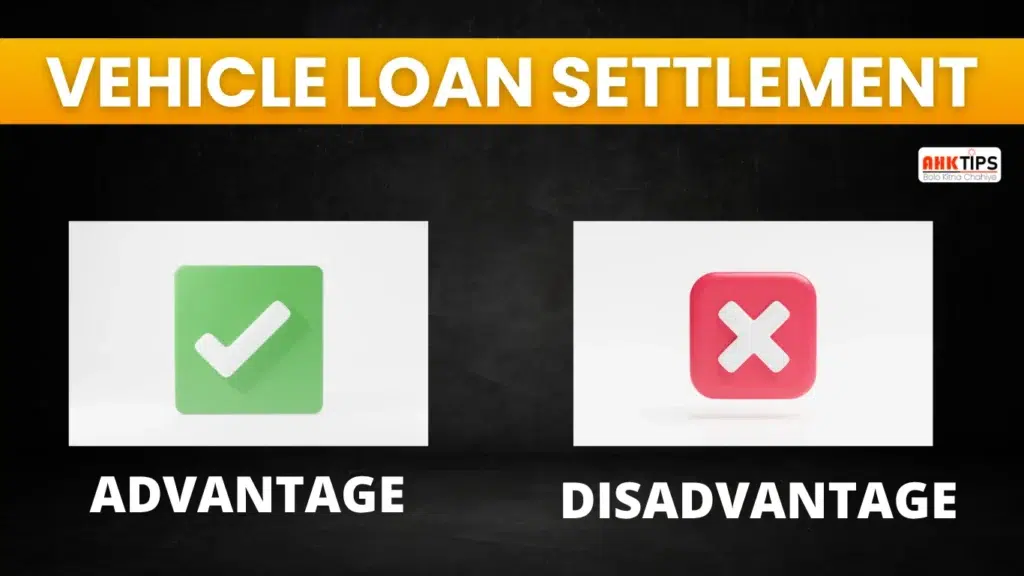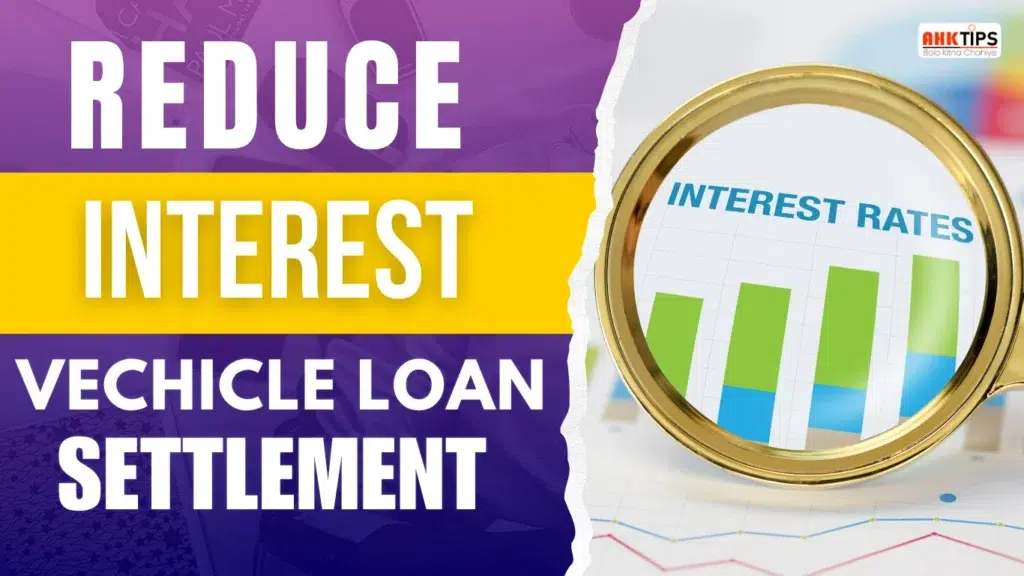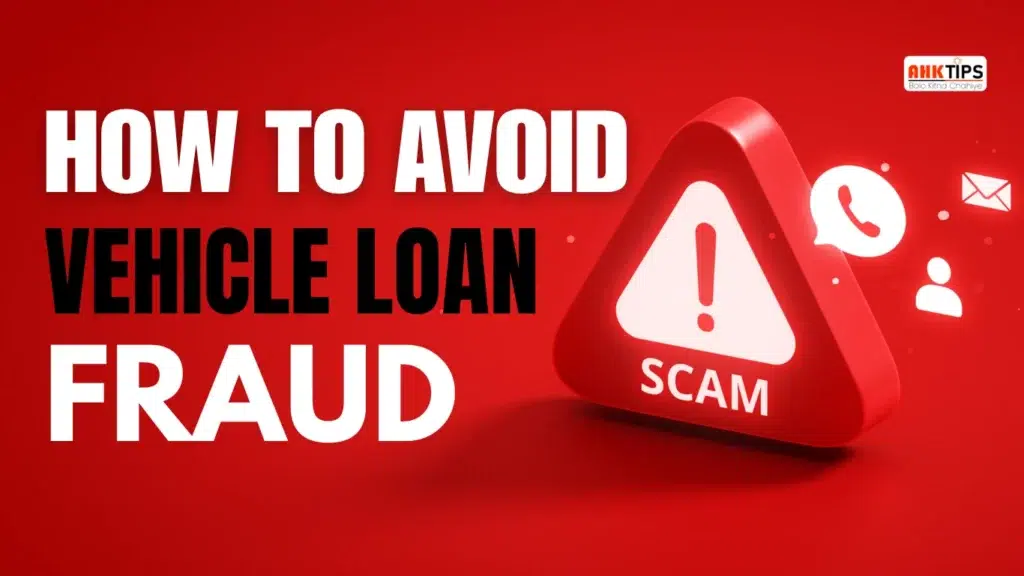Summary
Vehicle loan settlement enables a borrower to terminate the loan before the specific time agreed by settling the loan in full. Banks will approve such a request based on criteria such as repayment history, borrower capacity, loan duration and lenders’ terms. Prepayment penalties, administrative fees and requirements will be different for all lenders. The process includes finalising the amount remaining on the loan, contacting the lender for disposition, writing a formal request to settle the loan and providing appropriate documentation, providing the lender with the lump sum of money to settle the loan, and requesting a settlement letter. Important to ensure your credit report is updated to consider the loan as closed. Timely cash payment, processing your documentation, and speaking to your bank are most important to the loan settlement process, which is simple.
Introduction
Many people look into vehicle loan settlements to cut debt or pay off their loans early. If you’re ready to settle early or need to do so due to personal reasons, it can lead to financial freedom. Still, it’s crucial to know your eligibility and the settlement process. Banks have specific requirements. To qualify for a settlement, you usually need to meet the smallest loan term. You should also keep a clean repayment record and show financial stability. Borrowers should look at their loan agreements. They need to find out any fees for early payment and check which paperwork they need. The process of settlement consists of important actions. Find out your balance of your loan balance. After you find that out, contact your bank. Then you fill out several forms. After the forms are completed process and payment. Finally, you will get a confirmation of closure. These steps will help you settle in no time and with little effort.
Vehicle Loan Settlement Eligibility: Key Conditions to Know
Regarding financial management, a vehicle loan can be a major outlay of funds. Sometimes, though, things change, and you might find yourself in a situation where early vehicle loan settlement looks like a wise choice. Understanding the circumstances under which a bank views a vehicle loan settlement request is vi,tal whet the reason is financial difficulty, a change in your circumstances, or a chance to quickly pay off the loan. This book walks you through the typical eligibility rules and requirements.
What is Vehicle Loan Settlement?
An arrangement known as vehicle loan settlement is in which the borrower pays off the remaining loan balance in whole before the loan term expires. Usually this leads to a one-time lump sum payment and closed loan agreement. Although banks or other financial institutions may let this, they have some requirements that must be satisfied before sanctioning such a request.
Conditions for Vehicle Loan Settlement
Outstanding Loan Amount
Usually, banks demand that the borrower pay the whole remaining balance of the vehicle loan. This covers the main sum, any relevant interest, and other possible fees. Should you have been regularly paying off the loan, your outstanding debt may be less, which would facilitate settlement.
Eligibility Based on Loan Tenure
Most banks allow settlement only once a specific loan term has passed. If the borrower has made notable loan pay-off progress, the bank may consider approving the settlement demand. The bank might be more open to providing this option, for instance, if a borrower falls in the middle or toward the end of their loan term.
Financial Stability and Payment History
Whether a vehicle loan is approved depends largely on your financial stability. Usually, banks want applicants with a decent credit record. The bank is more likely to approve your settlement request if you have paid your loan on time and shown your capacity to pay it back. Regular, timely payments show your creditworthiness in good light.
Additional Factors That Impact Settlement Approval
Prepayment Penalties
Many times, early loan settlement causes prepayment penalties imposed by financial institutions. These fines are meant to pay the lender back for the interest they would have missed should the loan go forward as planned. These fees should be known to you, should you be thinking about a settlement, since they will affect the total cost of early loan closure.
Loan Agreement Terms
Every loan agreement features particular early settlement terms. Certain banks have clauses outlining the terms of vehicle loan settlement, such as a minimum waiting period before seeking settlement or additional charges. Exensively go over the agreement you signed with the bank, since any breach of the stated conditions could cause the settlement request to be denied.
Type of Loan
Furthermore influencing your eligibility for settlement is the kind of loan you have. For instance, compared to unsecured loans, loans including collateral—such as a hypothecation agreement with your vehicle—may have different terms. Should you have already paid off a significant amount of the loan and your car is free from lien, the settlement process might be easier.
How to Request Loan Settlement
Formally requesting loan settlement comes next once you have verified that you satisfy the required eligibility criteria. This usually entails:
Notifying Your Lender or Bank: Tell your loan officer or customer service representative your interest in loan settlement. They will go over with you specifics on the procedure, any relevant fees, and the paperwork needed.
The bank will want evidence that you have the required means to fully pay off the loan. This can call for other financial records, income documentation, or bank statements.
Reviewing your request and documentation, the bank might offer a settlement offer including any prepayment fees or penalties. Should your terms be accepted, the bank will complete the settlement and close your loan account.
Timing Your Settlement Request
Asking for a vehicle loan settlement depends on timing in great part. Should your request be made too early in the loan term, the outstanding balance could still be rather large, and the bank might not approve the settlement request. Furthermore, paying off the loan in the later phases could have more advantages since you have already paid down a significant amount of the interest.
Impact on Credit Score and Future Loans
One should take into account how a settlement of a vehicle loan could affect your credit score. By lowering your outstanding debt, early loan settlement helps increase your creditworthiness; any delays in repayment, penalties, or missed payments will lower your credit score.
On the other hand, since it shows a conscientious attitude to debt management, a settled loan can improve your prospects of getting future loans.
How to Request Vehicle Loan Settlement: A Step-by-Step Guide
Should you wish to pay off your vehicle loan early, you might want to give some thought to settling the loan with your bank. Clearing your obligations ahead of time will help you find financial relief. But getting a vehicle loan settlement can be difficult; thus, knowing how to approach your bank will make all the difference. Here’s a basic how-to for asking your bank for a vehicle loan settlement.
Step 1: Understand the Vehicle Loan Settlement Terms
You must completely grasp the terms and conditions of your loan agreement before starting any settlement claim. These records detail any prepayment penalties, whether early settlement is permitted, and other pertinent clauses.
Review Your Loan Agreement
Your loan agreement will say whether the bank allows early repayment or settlement. Certain banks might charge extra fees for requesting a settlement or impose limits on when you might do so. Look for any clauses about early closing and prepayment fines.
Calculate Your Outstanding Balance
Find your vehicle loan’s total outstanding balance before calling the bank. This covers any interest that might have developed, as well as the remaining principal. Make sure you also clearly understand what you will need to pay for some banks that may charge administrative fees or early settlement fees.
Step 2: Contact Your Bank
Review your loan agreement and figure the outstanding balance; then, get in touch with your bank or financial institution. You can get in touch via several outlets, including your relationship manager, customer service, or the branch you first applied for the loan from.
Phone or Online Inquiry
Most banks let you investigate settlement possibilities using online portals or customer service hotlines. Before formally presenting your request, a brief phone call or email will help you gather the necessary basic information. To expedite the process, be read, including other required information and your loan account number.
Request Specifics on the Settlement Process
Ask the bank for specifics about the process of settling the vehicle loan. This could cover the paperwork you have to turn in, any fees, and the loan settlement timetable. Clearly state your intention to pay the loan early and inquire about any particular requirements you might have to fulfil.
Step 3: Submit Your Settlement Request
Submitting your official settlement request to the bank comes next once you have all the required data.
Prepare the Required Documents
- Usually, banks need particular documentation to handle a settlement request. Among these are:
- Proof of Identity: A government-issued ID like a passport or driver’s license.
- Bank statements, pay stubs, or tax returns could be needed to show that you have the money to pay off the loan in whole.
- Excellent Loan Details: A copy of your current outstanding balance, together with the loan terms.
- See the bank to be sure you have all the required documentation on hand.
Submit the Request
When your paperwork is in order, formally ask to have the loan paid off. Depending on the bank, this might be accomplished online, by email, or personally at a branch. Make sure you express your intention to pay off the loan early and mention any particular terms you have discussed with the bank.
Step 4: Bank Review and Settlement Offer
The bank will go over your application following your request submission. Depending on the procedures of the bank, this can last a few days to several weeks.
Review of Payment History and Outstanding Balance
The bank will probably look over your outstanding balance and payment records. Should your loan be in good standing and you have fulfilled the requirements for settlement, the bank could extend a settlement offer with the precise amount to be paid, any fees involved, and the schedule for closing the transaction.
Understand the Terms of Settlement
Make sure you pay great attention to every element when the bank presents the settlement offer. This covers the final settlement balance, any extra fees, and loan account closure policies. If you settle early, some banks might grant a discount on interest; others might charge a penalty.
Step 5: Make the Payment
Making the complete loan payment comes next if you approve of the settlement terms. Usually, the payment is needed as one-time lump sum. Making the payment on time will help you to avoid any extra charges or penalties.
Ensure Proof of Payment
Get a bank confirmation or proof of payment once the payment is paid. This provides proof the loan has been paid off entirely. Especially if you intend to apply for loans or new credit in the future, it is advisable to save this records for future use.
Receive Loan Closure Documents
Demand loan closure documentation once the loan is paid off. These records ought to make it abundantly evident that the account is closed and the loan has been paid off. This will enable you to keep a tidy financial record.
Step 6: Follow-Up
You should follow up with the bank to make sure your credit report shows the loan settlement following the payment made and the closing of your loan account. This is important since the loan will be reported as closed and paid to prevent any credit score disparities.
Following these guidelines will help you to effectively close your loan ahead of schedule and ask for a vehicle loan settlement, so saving interest and providing financial freedom.
Vehicle Loan Settlement Payment Process: How to Complete Payment and Obtain Confirmation
If you decide to pay off your vehicle loan early, then making the payment and verifying the loan is formally closed comes second. Ensuring a safe transaction and getting all the necessary documentation for your records depend on an awareness of the vehicle loan settlement payment process. This book walks you through obtaining written bank confirmation and completing the settlement pay-off.
Step 1: Confirm the Settlement Amount
Before you start the payment, make sure your bank verifies the exact settlement amount. Typically, this denotes:
- The outstanding loan principal balance
- Any interest built up until the settlement date
- Should they be relevant, prepayment fines:
- Other fees for processing or administrative needs
- Request a Settlement Statement
Once your settlement demand is accepted, the bank will forward you a settlement statement. This should show all of the settlement value combined with any fines or charges you owe. Review this closely to be sure all charges are clear and the amount is accurate.
Step 2: Choose a Payment Method
Next is choosing a payment method that the bank approves and deems safe. Most banks allow several methods of payment, including:
Bank Transfer
Among the most secure and usually used methods is paying a settlement with a direct bank transfer. Make sure the transfer contains all the necessary information, including the loan account number and reference number. Before beginning the transfer, always check the bank account information with the institution to avoid errors.
Cheque Payment
Some banks could accept a cheque covering the whole settlement value. If you pay with a cheque, make sure it is crossed under the bank’s name. It is absolutely important to clear any specific cheque payment instructions with the bank.
Online Payment
Some banks offer online payments through their system for even more convenience.B efore considering the loan settled, make sure you enter all relevant information precisely and ensure effective payment processing. Save any receipt of payment confirmation for your records.
In-Person Payment
See your branch of banks if you wish to personally pay back the loan. Based on bank policies, one can achieve this with cash or a debit or credit card. Once more, be sure you request a receipt documenting payment.
Step 3: Complete the Payment
Once you have selected your method, it’s time to pay. Check to be sure you are exactly paying the recommended settlement amount shown on the settlement statement. Refrain from making partial payments unless the bank specifically approves; settling the entire amount ensures that the loan will be closed completely.
Ensure Timely Payment
Paying with the due date helps you to prevent any last-minute problems. Make sure the payment passes before the settlement date whether you use cheque or bank transfer to avoid loan closure issues or penalties.
Obtain Payment Confirmation
Once you pay, ask the bank for a confirming receipt. This receipt should prominently display the date and payment amount in addition to your loan account number. Keep this receipt proving your payment of the settlement.
Step 4: Request the Settlement Letter
Second, after successful payment processing, is receiving a vehicle loan settlement letter. This letter confirms that your loan has been paid off and closes the account.
Submit a Request for the Settlement Letter
Once you have paid the whole amount, ask the bank formally for a settlement letter. This letter—which also serves as proof that the loan has been paid off—determines closing the loan on your credit report. Usually, the bank will send this letter following payment processing and balance confirmation settling.
Verify the Details in the Settlement Letter
Make sure the settlement letter you obtain includes the following striking information:
- Number of your loan account.
- The whole paid-off loan settlement value
- The dates of payment
- The current situation of the loan—closed or settled
- Any reference pointing to the settlement?
Should the letter differ, immediately contact the bank to get an explanation.
Step 5: Monitor Your Loan Closure
Once you have the settlement letter, ensure the bank formally closes your loan account. You can call customer service for the bank or check the status of your loan online. Make sure your loan balance shows zero and your credit report shows the loan paid off.
Keep Copies of All Documents
You should have copies of the settlement letter, payment receipts, and settlement statement for future use. These records are vital, whether your credit score shows issues or if you have to prove the loan was paid off entirely going forward.
Step 6: Follow Up on Your Credit Report
Once the loan is paid off, your credit report may not show the loan closing for some time. Make sure your report accurately depicts the paid-off status of the loan to increase your creditworthiness.
These rules will help you to ensure that the process of paying off the vehicle loan is completed safely and that you get the necessary documentation proving complete loan pay-off. Knowing your paid financial obligation will give you peace of mind.
Conclusion
Paying off your vehicle loan settlement early can be a wise financial move if you’re ready and meet your lender’s criteria. To decide well, know the eligibility rules. Check your loan agreement. Also, keep in touch with your bank. Paying off your loan early can save you interest. It can also boost your credit score and give you peace of mind. Before you pay off your loan, look for any prepayment fees. Make sure to collect all needed documents to prevent delays or rejections. When you make the payment, ask for a settlement letter to confirm you’ve completed the loan. Also, check your credit report afterwards to ensure you mark the loan as closed. Managing cash flow or boosting your credit? Being careful helps your finances. Hold on to all your documents. Stay in touch with your bank. Pick the right time to settle for the best results with less hassle.
FAQ’s
Ans: Usually eligible once you have paid half of the loan term, you have a good payment record and stable finances.
Ans: Should you pay back the loan early to offset lost interest, banks may charge pre-payment penalties.
Ans: Usually, you need ID proof, proof of income, loan specifics, and a formal request letter.
Ans: Once paid, ask for a settlement letter and review your credit report to make sure the account is closed.


